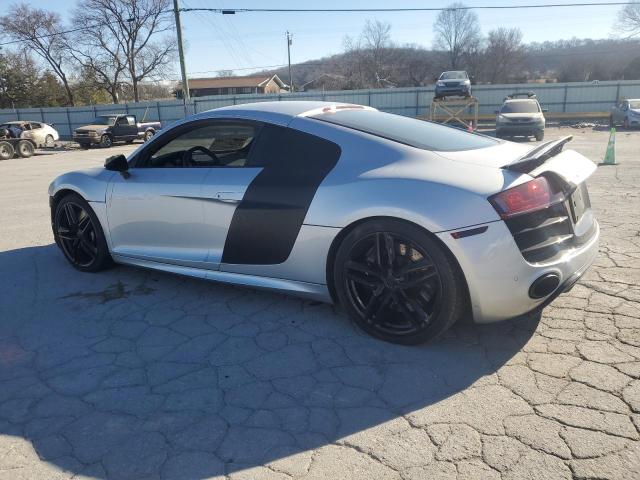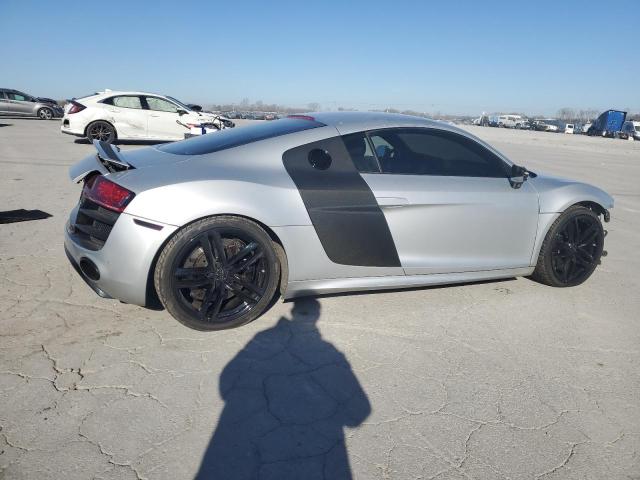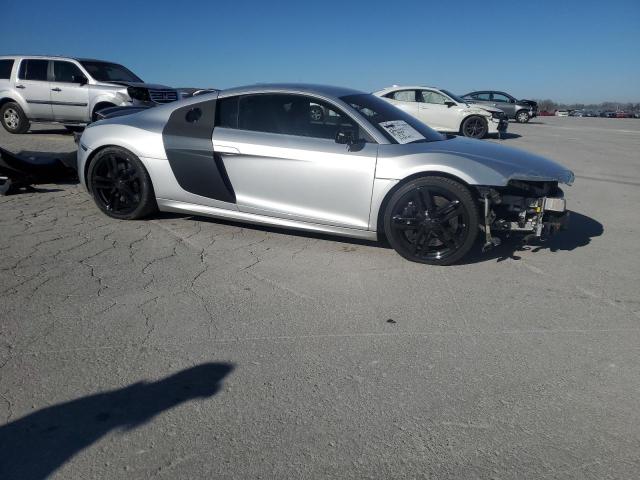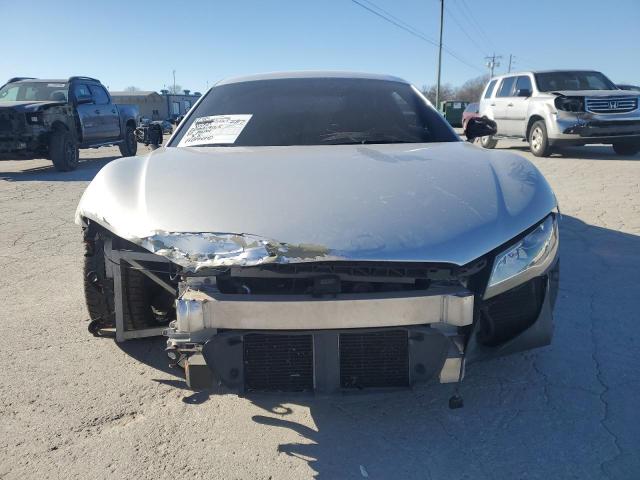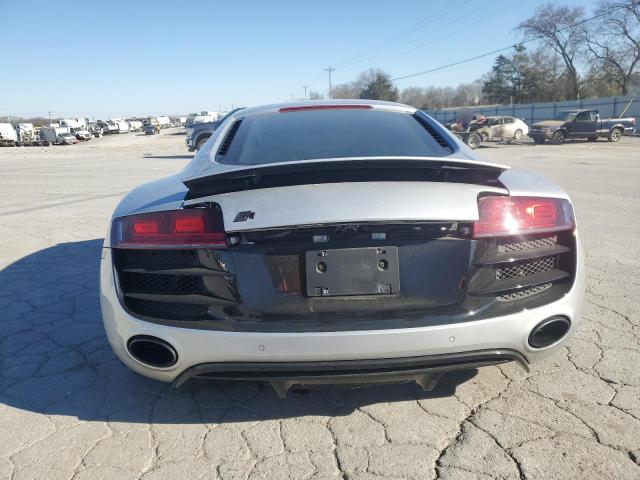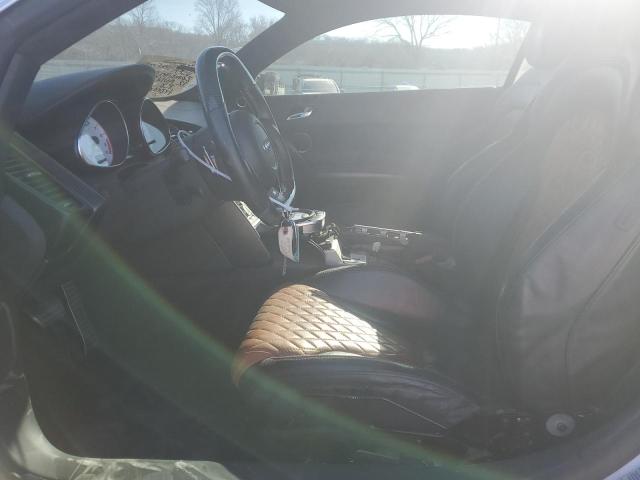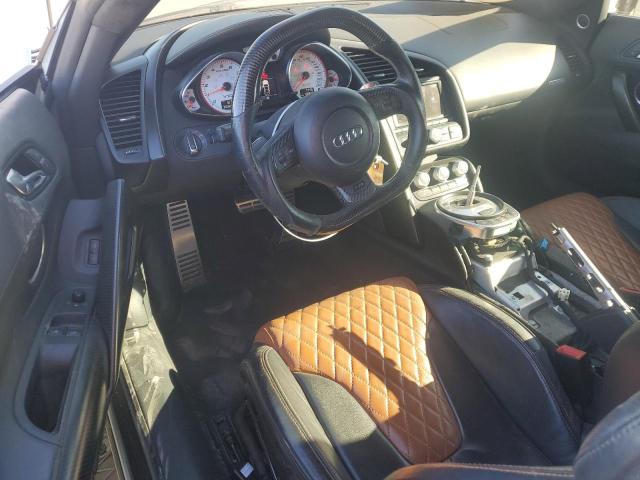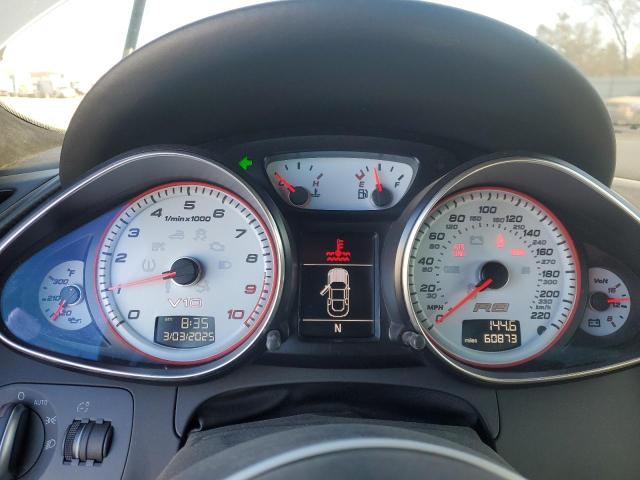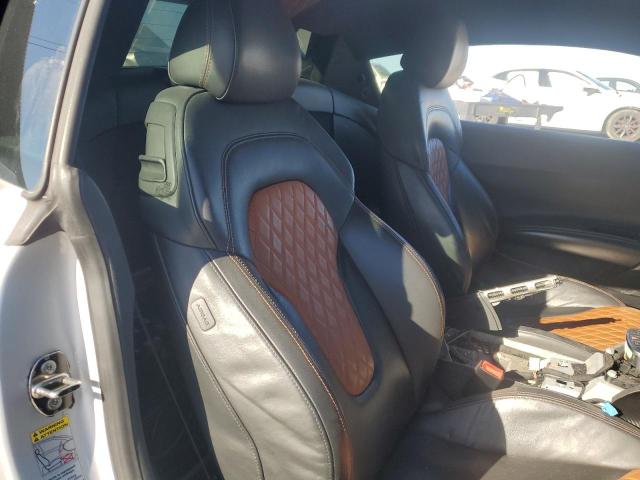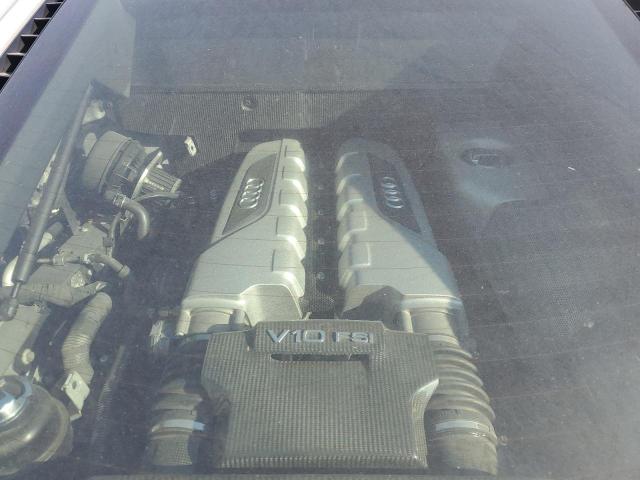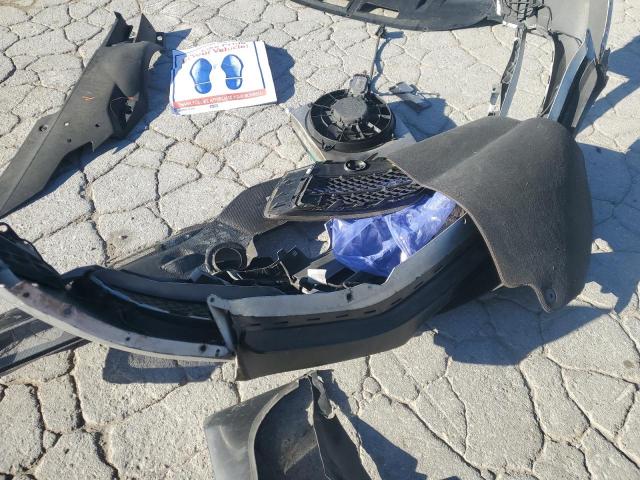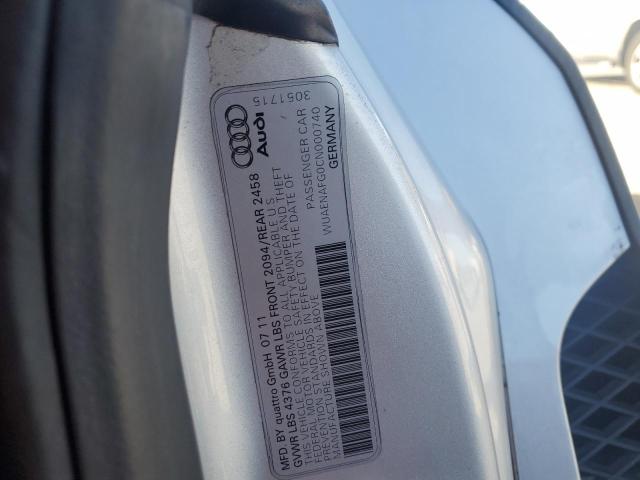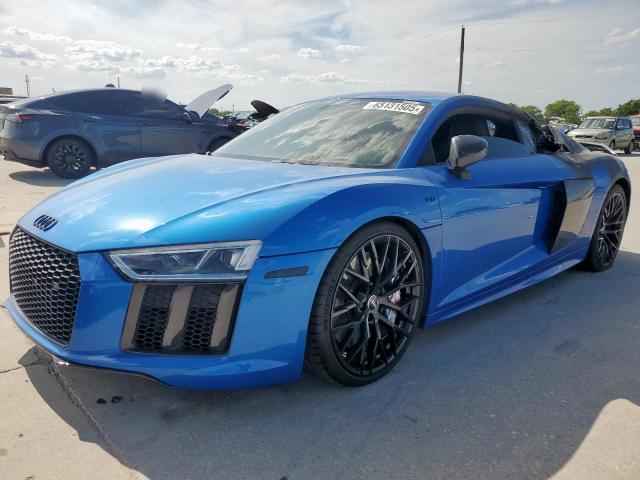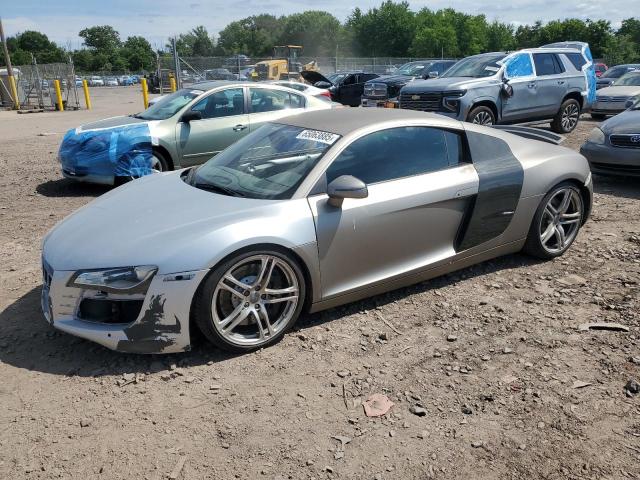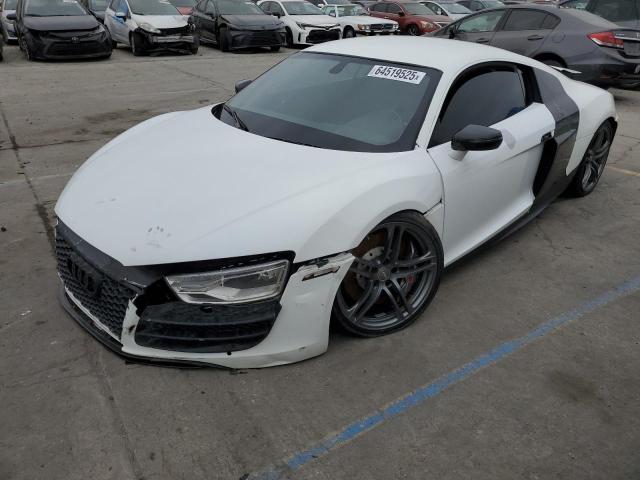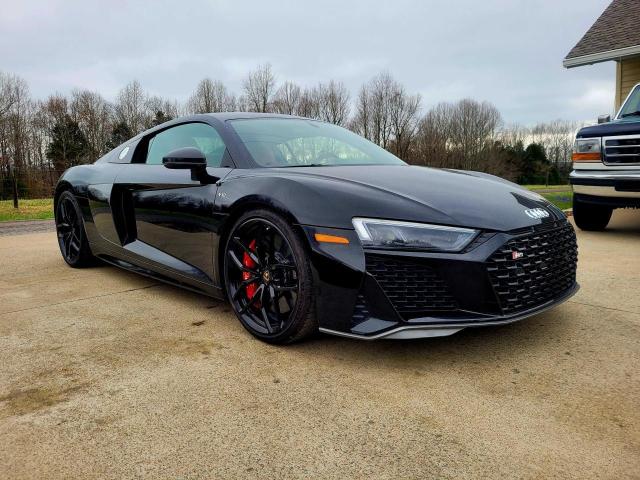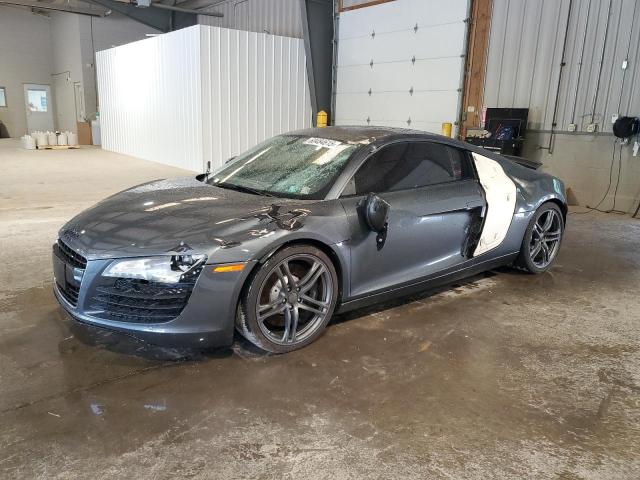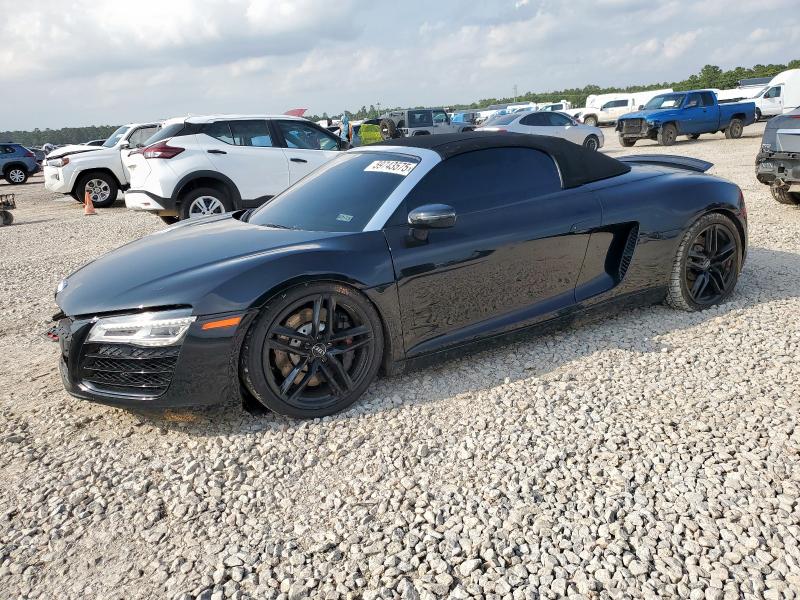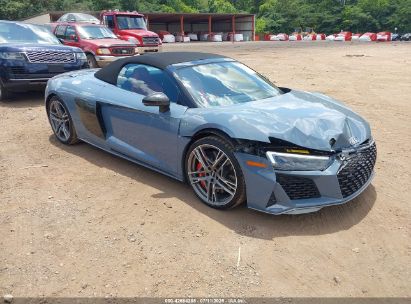2012 AUDI R8 | WUAENAFG0CN000740
 ❯
❯Lot details
- Sale Date2025-06-09
- Lot Number47002395
- ACV82217 $
- Sale documentTN - SALVAGE CERTIFICATE
- LocationTN - NASHVILLE
- Odometer60,873 miles (97,965 km)
- Primary DamageALL OVER
- SellerUSAA
Vehicle specifications
2
~$180,000
Engine: 5.2L naturally aspirated V10
Torque: 540 Nm
0–100 km/h: ~3.5 s
The first-generation Audi R8 broke new ground for the brand, introducing a true mid-engine supercar into its lineup. Initially powered by a 4.2-liter naturally aspirated V8 producing 420 horsepower, it was later joined by a 5.2-liter V10 borrowed from Lamborghini, culminating in the R8 V10 Plus with 550 horsepower. With a 0–60 mph time of 3.3 seconds in its most powerful form, the R8 firmly placed itself among elite performance cars of its time.
Performance wasn't limited to acceleration. The R8 featured a lightweight aluminum space frame, a mid-engine layout for near-perfect balance, and Audi’s quattro all-wheel-drive system that enhanced traction without dulling the driving experience. Optional carbon-ceramic brakes and magnetic ride suspension added even more precision and control on road or track.
Despite its supercar credentials, the R8 was everyday-drivable—a hallmark that set it apart from more temperamental rivals. Its styling, highlighted by side blades and a low-slung silhouette, became instantly iconic. Inside, it offered high-quality materials, intuitive controls, and surprising comfort. The R8 proved that a supercar could be both thrilling and usable, and it forever changed the way people viewed Audi as a performance brand.
Final Bid Audi R8 (2012)
$27,850
$43,979
$57,500
Body Styles
Coupe (R8 Coupe) – a mid-engine, two-door sports car with unmistakably clean, technical styling defined by its wide stance, signature sideblades behind the doors, and strong horizontal lines. The R8 Coupe emphasized Audi’s precision engineering philosophy while delivering exotic car proportions and a commanding presence on the road.
Convertible (R8 Spyder) – an open-top variant retaining the coupe’s performance and styling, with a lightweight fabric roof operable at speeds up to 50 km/h. The Spyder slightly softened the roofline while adding further exclusivity and driving theater, without sacrificing significant rigidity thanks to Audi’s aluminum Space Frame architecture.
Model Name Meaning (Manufacturer)
The "R" in R8 references Audi’s racing heritage, particularly its Le Mans-dominating R8 LMP prototype. The "8" does not refer to the number of cylinders but positions the R8 within Audi’s model hierarchy as a supercar above the A-series lineup, blending competition success with road-going performance excellence.
Model Name Meaning (Languages)
"R8" is globally effective and easily understood without translation. It conveys racing pedigree ("R") and elite status ("8") across all markets, reinforcing the Audi brand’s commitment to motorsport-derived technology and engineering sophistication.
Body & Interior Colors and Rims
The Audi R8 was offered in a curated palette emphasizing both classic sophistication and performance-focused drama. Traditional colors like Ibis White, Brilliant Red, and Phantom Black Pearl Effect established timeless appeal, while vivid tones such as Sepang Blue Pearl and Samoa Orange Metallic added exotic flair. Matte finishes like Daytona Grey Matte were available through Audi Exclusive, enabling deep personalization. Early models prominently featured the contrasting sideblades in Silver, Grey, or Carbon Fiber finishes, an instantly recognizable R8 signature.
Inside, the R8 combined pure driver focus with high-end materials. Leather seats in Black, Luxor Beige, or Crimson Red were standard, complemented by brushed aluminum or optional Carbon Sigma inlays. Facelifted models added upgraded MMI systems with revised rotary controls, higher-resolution displays, and more advanced navigation. The low, focused dashboard emphasized visibility and control, while minimalistic physical switchgear and signature circular vents maintained a lightweight, motorsport-inspired environment. Spyder variants offered optional neck-level heating for open-top comfort in cooler climates.
Wheels ranged from 18-inch double-spoke alloys on early V8 models to lightweight 19-inch twin-spoke designs for V10 and V10 Plus variants. Various finishes such as Titanium Matte or Polished Aluminum were offered, ensuring owners could customize performance and visual identity to match the R8’s exotic nature.
Top Expensive Options
- Carbon Sigma Sideblades and Interior Inlays: ~$3,500
- Audi Magnetic Ride Adaptive Suspension: ~$2,000
- Bang & Olufsen Sound System: ~$1,800
- Carbon Ceramic Brake Package (V10 models only): ~$9,000
- Full Fine Nappa Leather Package (Dashboard, Door Panels, Console): ~$3,800
- Diamond-Stitched Sport Seats: ~$2,500
- Extended Navigation Plus with MMI Touch (Facelifted models): ~$2,200
- Forged 19-inch High-Performance Wheels: ~$2,000
- R tronic or S tronic Transmission Upgrade: ~$9,000
- Audi Exclusive Custom Paint Colors: ~$6,500
vs Competitors
The Audi R8 (Type 42) competed directly with the Porsche 911 Turbo, Nissan GT-R R35, and Aston Martin V8 Vantage. Compared to the 911 Turbo, the R8 offered a more exotic mid-engine layout and a more dramatic visual presence, though the Porsche retained a slight performance edge in ultimate speed and tuning potential. Against the GT-R, the R8 countered with natural aspiration purity, a far more luxurious cabin, and more emotional design. Versus the Aston Martin V8 Vantage, the R8 delivered superior engineering precision, greater reliability, and stronger overall performance, while maintaining a similar aura of exclusivity. Uniquely, the R8 became a supercar you could drive daily, offering exotic performance without traditional supercar compromises in usability or comfort.
Fun Fact
The Audi R8 shares approximately 50% of its components with the Lamborghini Gallardo — including major elements of the aluminum space frame chassis and V10 powertrain — but was tuned by Audi engineers to provide a more refined, balanced, and forgiving driving experience compared to its wilder Italian sibling. It became the first true German everyday supercar.



